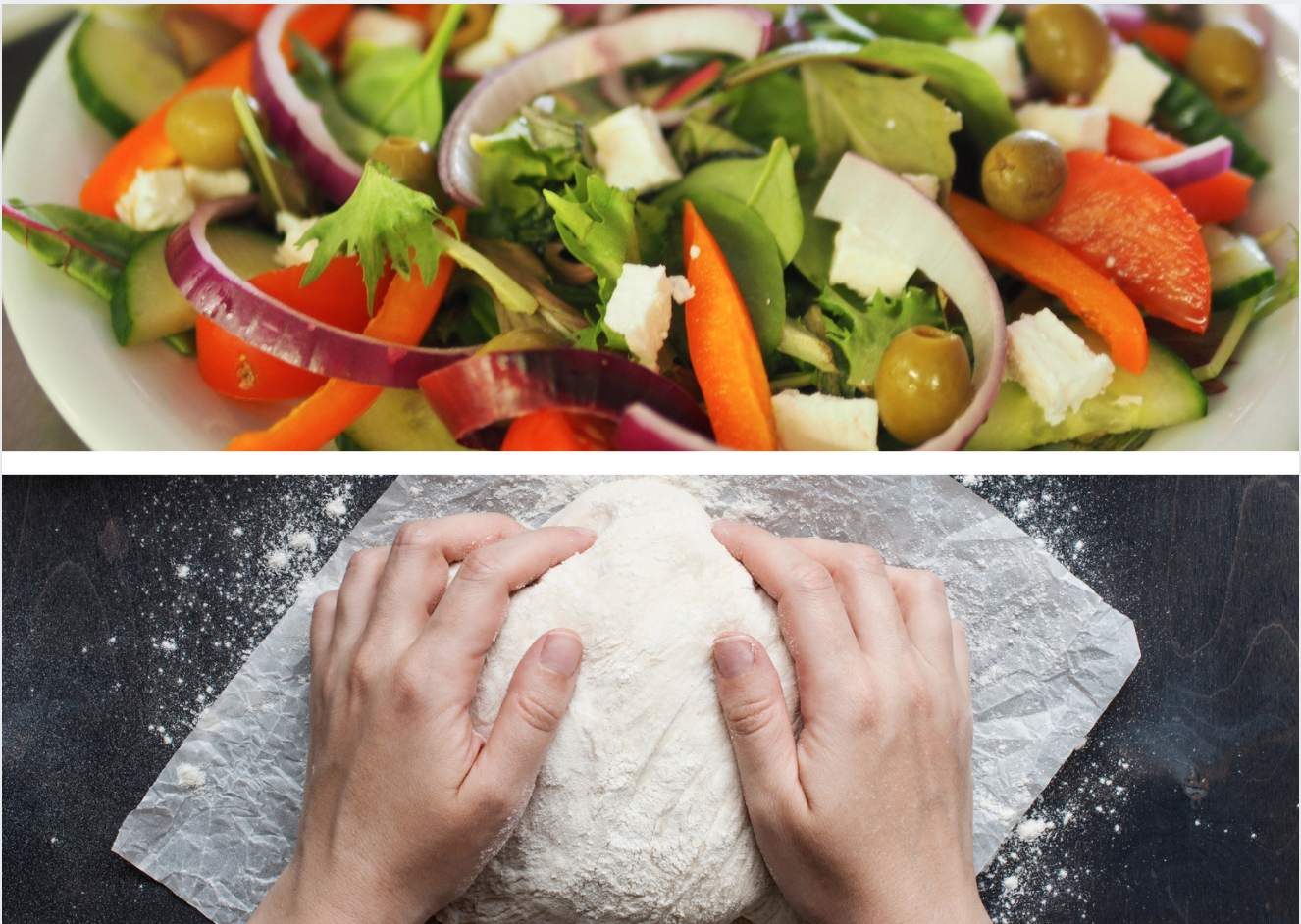"I Spy" Food Science
In this activity, we will strengthen our science observation skills while exploring food science.
Learning Objectives/Opportunities
Build basic knowledge about mixtures and solutions
Science process skills: observation, comparing and contrasting
Developmental Skills: colors, shapes, fine motor skills
In order to do this activity, we are going to learn the difference between a mixture and a solution.
A mixture is a combination of two foods that can still be picked apart. Think about a salad. Even though the veggies are all mixed together, you can pick out the carrots or the cucumbers. This means it is a mixture!
A solution is a mixture of two foods that cannot be picked apart when mixed together. Think about cake batter. When you mix the egg into the flour, you can't pick out the egg anymore. That makes it a solution!
Materials:
Images of food or an actual meal
Activity Instructions
Find pictures of food on the internet, in a magazine, or on TV
For each food, use your science observation skills to determine if the food depicted is a mixture or solution
First, use your sense of sight
What colors do you see? If a food has more than one color, that might mean it is a mixture
What shapes do you see? If you see shapes, that means you can see where one ingredient starts and ends. That means its probably a mixture
Now, use or imagine using your sense of touch
Can you pick out pieces of the food? If yes, then it’s a mixture!
If you can, cut out the pictures and sort them into the appropriate column on the Food Science Chart.
Examining the Experiment:
In this activity, we used our science observation skills to learn about the world of food! Science process skills such as observing, comparing, and contrasting, and communicating are important 21st-century skills. These abilities help with similar higher-order cognitive abilities such as critical thinking and complex reasoning. We can make tricky science content like chemistry and physics more accessible through these science process skills.
Science Extension:
This activity exercises 2 science process skills: observation and classification. There are 4 other basic science process skills including inferring, predicting, measuring, and communicating. Pick one of these other process skills and think about ways to incorporate these skills in food science. For example, you can practice communication skills by encouraging children to explain their thought process as they make decisions about each food classification.
STEMSpark Stumper
Can you find a food that is both a mixture and a solution?

